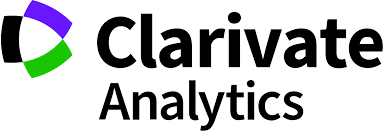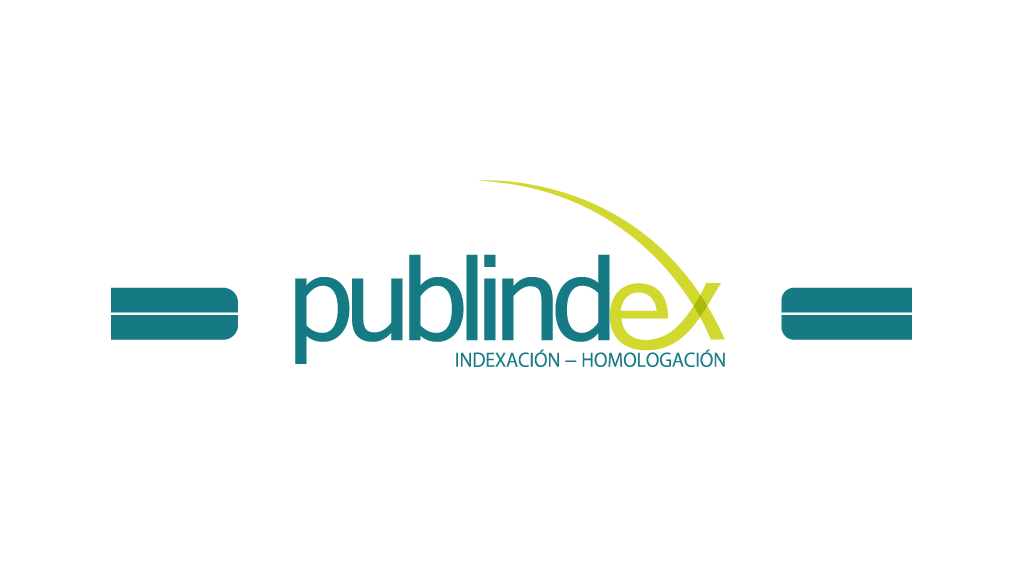Authors who publish in this journal agree to the following terms:
Acta Colombiana de Psicología complies with international intellectual property and copyright laws, and particularly with Article No. 58 of the Political Constitution of Colombia, Law No. 23 of 1982, and the Agreement No. 172 of September 30, 2010 (Universidad Católica de Colombia Intellectual Property Regulation).
Authors retain their copyright and grant to the Acta Colombiana de Psicología the right of first publication, with the work registered under Creative Commons attribution license, which allows third parties to use the published material, provided they credit the authorship of the work and the first publication in this Journal.
Abstract
The objective of this study was to analyze the relationship of emotional intelligence and family environment. A cross-sectional and correlational study was executed, involved 127 adolescents in San Juan de Lurigancho District, Lima - Peru. Data obtained were on age, sex, and family structure. Measurements of family environment (FE) and emotional intelligence (EI) were made through an adapted version of the Family Environment Scale (FES) and a EI scale, respectively. Student's t test was used for the comparison of emotional intelligence scores by gender and family structure and Pearson's r for the correlation analysis between family environment and emotional intelligence. The analysis revealed gender differences in empathy (t = 3.445, p <.01) and social skills (t = 2.711, p <.01), where women presented higher scores than men. There were no gender differences in the total score of EI. There were also significant differences in self-regulation (t = 2.319; p <.05) and self-motivation (t = 2.713; p <.01) in adolescents from nuclear and non-nuclear families. Finally, a direct correlation between family environment and emotional intelligence was found (r = .632, p <.01).

References
Aimaganbetova, O., Tolegenova, A., Nurysheva, G., Syrgakbaeva, A., Mussikhina, E., Dzhumagalieva, I., & Aimaganbetov, A. (2016). The Impact of "Self-knowledge" Subject on Social-psychological Characteristics of Pupils' Identity. Procedia. Social and Behavioral Sciences, 217, 771-778. Doi: https://doi.org/10.10167j.sbspro.2016.02.143
AlDosiry, K. S., Alkhadher, O. H., AlAqraa', E. M., & Anderson, N. (2015). Relationships between emotional intelligence and sales performance in Kuwait. Revista de Psicología Del Trabajo Y de Las Organizaciones, 32(1), 39-45. Doi: https://doi.org/10.10167j.rpto.2015.09.002
Amato, P. R., & Keith, B. (1991). Parental divorce and the wellbeing of children: a meta-analysis. Psychological Bulletin, 110(1), 26-46.
Argyle, M. (1990). The psychology of interpersonal behaviour. Harmondsworth, UK: Penguin.
Aritzeta, A., Balluerka, N., Gorostiaga, A., Alonso-Arbiol, I., Haranburu, M., & Gartzia, L. (2016). Classroom emotional intelligence and its relationship with school performance. European Journal of Education and Psychology, 9(1), 1-8. Doi: https://doi.org/10.1016/j.ejeps.2015.11.001
Asghari, M. S., & Besharat, M. A. (2011). The relation of perceived parenting with emotional intelligence. Procedia. Social and Behavioral Sciences, 30, 231-235. Doi: https://doi.org/10.1016/j.sbspro.2011.10.046
Azpiazu, L., Esnaola, I., & Sarasa, M. (2015). Capacidad predictiva del apoyo social en la inteligencia emocional de adolescentes. European Journal of Education and Psychology, 8(1), 23-29. Doi: https://doi.org/10.1016/j.ejeps.2015.10.003
Bagozzi, R. P., Gopinath, M., & Nyer, P. U. (1999). The Role of Emotions in Marketing. Journal of the Academy of Marketing Science, 27(2), 184-206. Doi: https://doi.org/10.1177/0092070399272005
Bar-On, R. (1997). EQ-I Bar-On Emotional Quotient Inventory: A Measure of Emotional Intelligence. Multi-Health Systems.
Batson, C. D., Fultz, J., & Schoenrade, P. A. (1987). Las reacciones emocionales de los adultos ante el malestar ajeno. En N. Eisenberg & J. Strayer (Eds.), La empatía y su desarrollo (pp. 181-204). Bilbao: Desclée de Brouwer.
Bradley, R. H., & Corwyn, R. F. (2002). Socioeconomic status and child development. Annual Review of Psychology, 53, 371-99. Doi: https://doi.org/10.1146/annurev.psych.53.100901.135233
Chester, D. S., Lynam, D. R., Milich, R., Powell, D. K., Andersen, A. H., & De Wall, C. N. (2016). How Do Negative Emotions impair self-control A neural model of negative urgency. NeuroImage, 132, 43-50. Doi: https://doi.org/10.1016/j.neuroimage.2016.02.024
Chiriboga, R., & Franco, J. (2001). Validación de un test de inteligencia emocional en niños de diez años de edad. Médico de Familia, 1-7.
Cohen, J. (1988). Statistical power analysis for the behavioral sciences (2da. ed.). New York: Lawrence Erlbaum Associates.
Cohen, J. (1992). A power primer. Psychological Bulletin, 112(1), 155-9. Recuperado de http://www.ncbi.nlm.nih.gov/pubmed/19565683
Conway, J., Bourque, S., & Scott, J. (2013). El concepto de género. En M. Lamas (Ed.), El género: la construcción cultural de la diferencia sexual (pp. 21-33). México: Grupo Editorial Miguel Ángel Porrúa.
Cooper, R. K., & Sawaf, A. (1998). Executive EQ: Emotional Intelligence in Leadership and Organizations. Penguin.
Cronbach, L. J. (1951). Coefficient alpha and the internal structure of tests. Psychometrika, 16(3), 297-334. Doi: https://doi.org/10.1007/BF02310555
Davies, P. T., & Cummings, E. M. (1994). Marital conflict and child adjustment: an emotional security hypothesis. Psychological Bulletin, 116(3), 387-411.
DiPrete, T. A., & Jennings, J. L. (2012). Social and behavioral skills and the gender gap in early educational achievement. Social Science Research, 41(1), 1-15. Doi: https://doi.org/10.1016/j.ssresearch.2011.09.001
Dominguez-Lara, S. (2016). Diferencias entre grupos y magnitud del efecto: un análisis complementario. Archivos Argentinos de Pediatría, 114(4), e300-e301.
Dominguez-Lara, S. (2017). Magnitud del efecto, una guía rápida. Educación Médica, En prensa, 1-4. Doi: https://doi.org/10.1016/j.edumed.2017.07.002
Domínguez-Lara, S. (2016). Anales del sistema sanitario de Navarra. Anales Del Sistema Sanitario de Navarra, 39(1), 169-170. Recuperado de http://scielo.isciii.es/scielo.phpscript=sci_arttext&pid=S1137-66272016000100024
Dominguez, S., Moscoso, M. S., Merino, C., & Navarro, J. S. (2016). Un método para la comparación de correlaciones basado en intervalos de confianza: aportes a Tejedor et al. Revista de Psiquiatría Y Salud Mental, 9(4), 228-229. Doi: https://doi.org/10.1016/j.rpsm.2015.12.001
Downey, D. B., & Vogt, A. S. (2005). Sex Differences In School Performance During High School: Puzzling Patterns and Possible Explanations. The Sociological Quarterly, 46(2), 299-321. Doi: https://doi.org/10.1111/j.1533-8525.2005.00014.x
Eagly, A. H., Beall, A. E., & Sternberg, R. J. (2004). The psychology of gender (2nd ed.). London: Guilford Press.
Egger, H. L., & Angold, A. (2006). Common emotional and behavioral disorders in preschool children: presentation, nosology, and epidemiology. Journal of Child Psychology and Psychiatry, and Allied Disciplines, 47(3-4), 313-37. Doi: https://doi.org/10.1111/j.1469-7610.2006.01618.x
Eisenberg, N., Spinrad, T. L., & Eggum, N. D. (2010). Emotion-related self-regulation and its relation to children's maladjustment. Annual Review of Clinical Psychology, 6, 495-525. Doi: https://doi.org/10.1146/annurev.clinpsy.121208.131208
Else, N., Higgins, A., Allison, C., & Morton, L. C. (2012). Gender differences in self-conscious emotional experience: a meta-analysis. Psychological Bulletin, 138(5), 947-81. Doi: https://doi.org/10.1037/a0027930
Extremera, N., & Fernández, P. (2004). El papel de la inteligencia emocional en el alumnado: evidencias empíricas. Revista Electrónica de Investigación Educativa. Recuperado de http://redie.uabc.mx/redie/article/view/105/1121
Fernández, P., & Extremera, N. (2013). La Inteligencia emocional como una habilidad esencial en la escuela. Revista Iberoamericana de educación, 29(1), 1-6.
Flouri, E., Midouhas, E., & Joshi, H. (2015). Family and neighbourhood risk and children's problem behaviour: The moderating role of intelligence. Intelligence, 53, 33-42. Doi: https://doi.org/10.1016/j.intell.2015.08.003
Furstenberg, F. (2003). El cambio familiar estadounidense en el último tercio del siglo XX. En Nuevas formas de familia: perspectivas nacionales e internacionales (pp. 11-35). Montevideo: Fondo de las Naciones Unidas para la Infancia (UNICEF).
Gardner, H. (2006). Multiple Intelligences: New Horizons. New York: Basic Books.
Goleman, D. (2011). Working With Emotional Intelligence. New York: Bantam Books.
Goleman, D. (2012). Inteligencia emocional. Barcelona: Editorial Kairós.
González, N., & Valdez, J. (2013). Resiliencia: Diferencias por edad en hombres y mujeres mexicanos. Acta de Investigación Psicológica, 3(1), 941-955.
Gottman, J. (1997). The Heart of Parenting: How to Raise an Emotionally Intelligent Child. New York: Bloomsbury.
Gottman, J. (2001). Meta-Emotion, Children's Emotional Intelligence, and Buffering Children from Marital Conflict. En C. D. Ryff & B. Singer (Eds.), Emotion, social relationships, and health. Series in affective science (pp. 23-55). New York: Oxford University Press. Doi: https://doi.org/10.1093/acprof:oso/9780195145410.001.0001
Herpertz, S., Schütz, A., & Nezlek, J. (2016). Enhancing emotion perception, a fundamental component of emotional intelligence: Using multiple-group SEM to evaluate a training program. Personality and Individual Differences, 95, 11-19. Doi: https://doi.org/10.1016Zj.paid.2016.02.015
Jadue, G. (2003). Transformaciones familiares en Chile: Riesgo creciente para el desarrollo emocional, psicosocial y la educación de los hijos. Estudios Pedagógicos, 29, 115-126. Doi: https://doi.org/10.4067/S0718-07052003000100008
Johnson, A. R., & Stewart, D. W (2005). A Reappraisal of the Role of Emotion in Consumer Behavior. In Review of Marketing Research (Vol. 1, pp. 3-34). Emerald Group Publishing Limited. Doi: https://doi.org/10.1108/S1548-6435(2004)0000001005
Lafferty, J. (2004). The relationship between gender, empathy, and aggressive behaviors among early adolescents. Dissertation Abstracts International: Section B: The Sciences and Engineering, 64(12), 6377B.
Lahav, O., Maeir, A., & Weintraub, N. (2014). Gender differences in students' self-awareness of their handwriting performance. British Journal of Occupational Therapy, 77(12), 614-618. Doi: https://doi.org/10.4276/030802214X14176260335309
Lekaviciene, R., & Antiniene, D. (2016). High Emotional Intelligence: Family Psychosocial Factors. Procedia. Social and Behavioral Sciences, 217, 609-617. Doi: https://doi.org/10.1016/j.sbspro.2016.02.066
Macías, A. J., Gutiérrez, C., Carmona, F. J., & Crespillo, D. (2015). Relationship between perceived emotional intelligence and professional quality of life with the achievement of occupational objectives in the costa del sol primary health care district. Atencion Primaria, 48(5), 301-307. Doi: https://doi.org/10.10167j.aprim.2015.06.007
Mayer, J., Caruso, D., & Salovey, P. (1999). Emotional intelligence meets traditional standards for an intelligence. Intelligence, 27(4), 267-298. Doi: https://doi.org/10.1016/S0160-2896(99)00016-1
Mayer, J. D., & Salovey, P. (1997). What is emotional intelligence In Emotional Development and Emotional Intelligence: Educational Implications (pp. 3-31). New York: Basic Books.
McKinley, S. K., Petrusa, E. R., Fiedeldey, C., Mullen, J. T., Smink, D. S., Scott, S. E., ... Phitayakorn, R. (2014). Are There Gender Differences in the Emotional Intelligence of Resident Physicians Journal of Surgical Education, 71(6), e33-e40. Doi: https://doi.org/10.1016/jjsurg.2014.05.003
McNulty, J. P., Mackay, S. J., Lewis, S. J., Lane, S., & White, P. (2015). An international study of emotional intelligence in first year radiography students: The relationship to age, gender and culture. Radiography, 22(2), 6-10. Doi: https://doi.org/10.1016/j.radi.2015.10.008
Med, M. (1935). Sex and Temperament in the primitive societies. New York: Morrow.
Meece, J. L., Glienke, B. B., & Burg, S. (2006). Gender and motivation. Journal of School Psychology, 44(5), 351-373. Doi: https://doi.org/10.1016/j.jsp.2006.04.004
Mitsopoulou, E., & Giovazolias, T. (2015). Personality traits, empathy and bullying behavior: A meta-analytic approach. Aggression and Violent Behavior, 21, 61-72. Doi: https://doi.org/10.1016/j.avb.2015.01.007
Montoya, B. I., & Landero, R. (2013). Satisfacción con la vida y autoestima en jóvenes de familias monoparentales y biparentales. Psicología Y Salud, 18(1), 117-122. Recuperado de http://revistas.uv.mx/index.php/psicysalud/article/view/682/1202
Moos, R., & Tricket, E. (1987). Escalas del clima social: familia, trabajo, instituciones penitenciarias, centro escolar. Madrid: TEA.
Mortan, R. A., Ripoll, P., Carvalho, C., & Bernal, M. C. (2014). Effects of emotional intelligence on entrepreneurial intention and self-efficacy. Revista de Psicología Del Trabajo Y de Las Organizaciones, 30(3), 97-104. Doi: https://doi.org/10.1016/j.rpto.2014.11.004
Olhaberry, M., & Farkas, C. (2012). Estrés materno y configuración familiar: estudio comparativo en familias chilenas monoparentales y nucleares de bajos ingresos. Universitas Psychologicahologica, 11(4), 1317-1326.
Ordóñez, A., Maganto, C., & González, R. (2015). Somatic complaints, emotional awareness and maladjustment in schoolchildren. Anales de Pediatría, 82(5), 308-15. Doi: https://doi.org/10.1016/j.anpedi.2014.03.020
Paredes, M. (2003). Los cambios en la familia en Uruguay: ¿Hacia una segunda transición demográfica EnNuevas formas de familia: perspectivas nacionales e internacionales (pp. 73-101). Montevideo: Fondo de las Naciones Unidas para la Infancia (UNICEF).
Parsons, T., & Bales, R. F. (1956). Family, socialization and interaction process. London: Routledge.
Pérez, A., Martínez, M. L., Mesa, I., Pérez, R., Leal, F. J., & Jiménez, I. (2009). Cambios en la estructura y en la función familiar del adolescente en la última década (1997-2007). Atención Primaria, 41(9), 479-485. Doi: https://doi.org/10.1016/j.aprim.2009.03.015
Povedano, A., Hendry, L. B., Ramos, M. J., & Varela, R. (2011). Victimización escolar: Clima familiar, Autoestima y Satisfacción con la vida desde una perspectiva de género. Psychosocial Intervention, 20(1), 5-12. Doi: https://doi.org/10.5093/in2011v20n1a1
Ramsden, S. R., & Hubbard, J. A. (2002). Family Expressiveness and Parental Emotion Coaching: Their Role in Children's Emotion Regulation and Aggression. Journal of Abnormal Child Psychology, 30(6), 657-667. Doi: https://doi.org/10.1023/A:1020819915881
Riglin, L., Collishaw, S., Shelton, K. H., McManus, I. C., Ng-Knight, T., Sellers, R., ... Rice, F. (2016). Higher cognitive ability buffers stress-related depressive symptoms in adolescent girls. Development and Psychopathology, 28(1), 97-109. Doi: https://doi.org/10.1017/S0954579415000310
Salguero, J. M., & Iruarrizaga, I. (2006). Relaciones entre Inteligencia Emocional percibida y emocionalidad negativa: ansiedad, ira y tristeza/depresión. Ansiedad Y Estrés, 12(2), 207-221.
Sánchez, D., León, S., & Barragán, C. (2015). Correlación de inteligencia emocional con bienestar psicológico y rendimiento académico en alumnos de licenciatura. Investigación En Educación Médica, 4(15), 126-132. Doi: https://doi.org/10.1016/j.riem.2015.04.002
Sánchez, M., Fernández, P., Montañés, J., & Latorre, J. (2008). ¿Es la inteligencia emocional una cuestión de género? Socialización de las competencias emocionales en hombres y mujeres y sus implicaciones. Electronic Journal of Research in Educational Psychology, 6(15), 455-474.
Santander, S., Zubarew, T., Santelices, L., Argollo, P., Cerda, J., & Bórquez, M. (2008). Influencia de la familia como factor protector de conductas de riesgo en escolares chilenos. RevistaMédica de Chile, 136(3), 317-324. Doi: https://doi.org/10.4067/S0034-98872008000300006
Shapiro, L. E. (2010). How to Raise a Child with a High EQ: Parents' Guide to Emotional Intelligence. New York: HarperCollins.
Shapiro, L. E., & Tiscornia, A. (1997). La inteligencia emocional de los niños. México: Vergara.
Valdivia, C. (2008). Aparecen hoy un gran número de modelos que alteran los parámetros con los que se entendía la vida familiar. Los cambios afectan a todo el sistema familiar. Revista La Revue Du REDIF, 2(1), 15-22.
Yap, B. W., & Sim, C. H. (2011). Comparisons of various types of normality tests. Journal of Statistical Computation and Simulation, 81(12), 2141-2155. Doi: https://doi.org/10.1080/00949655.2010.520163































